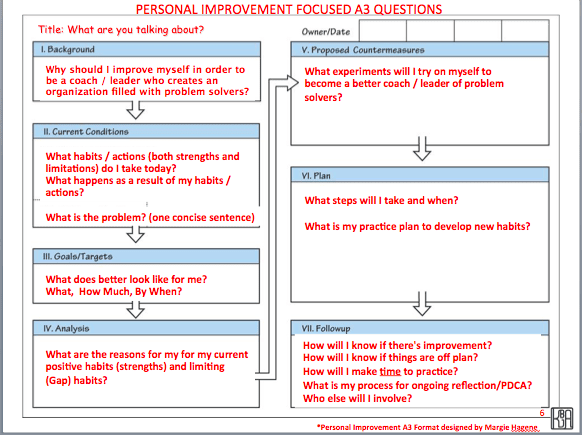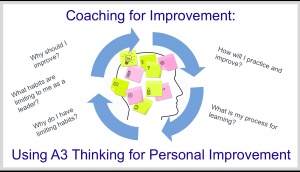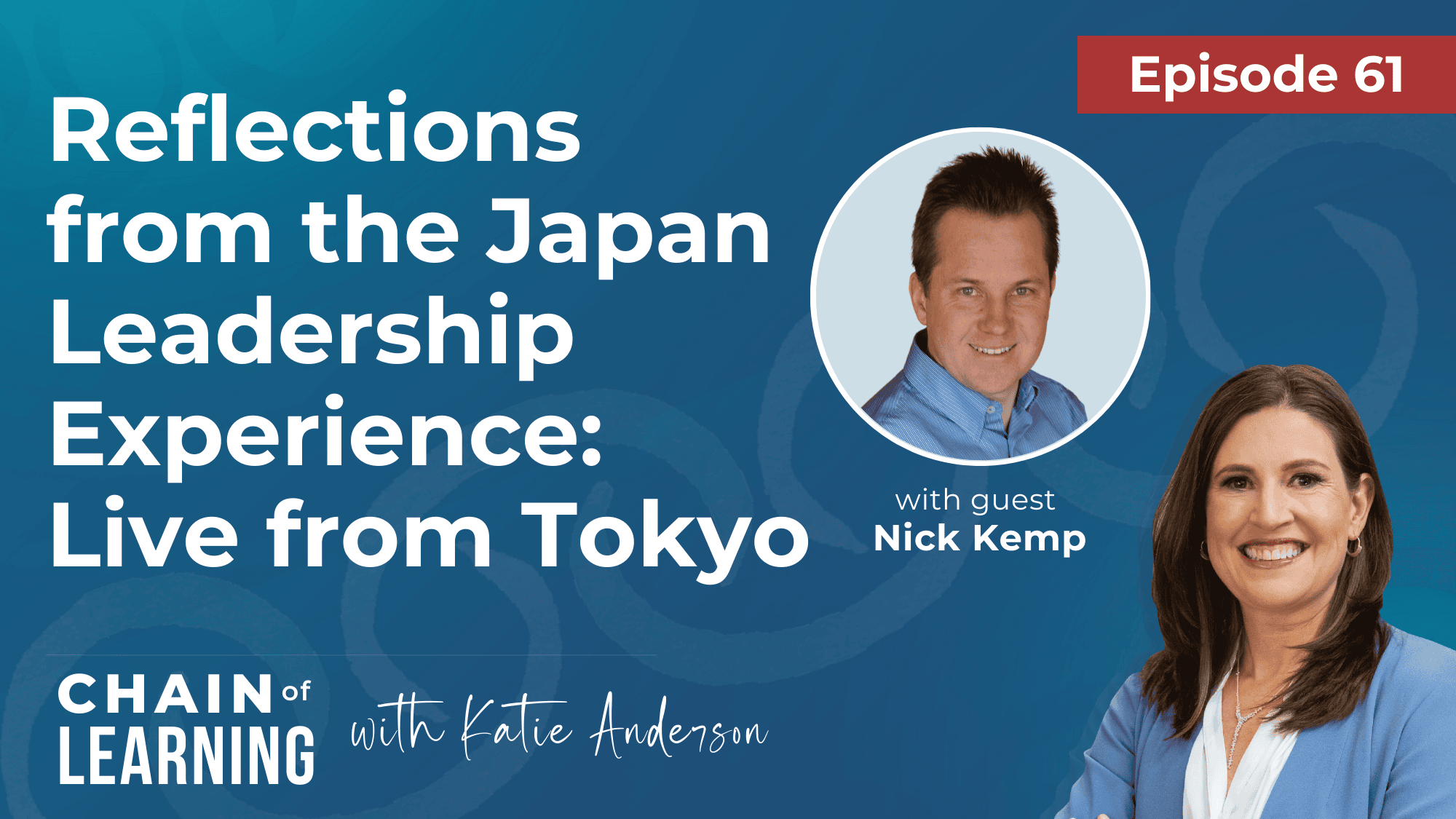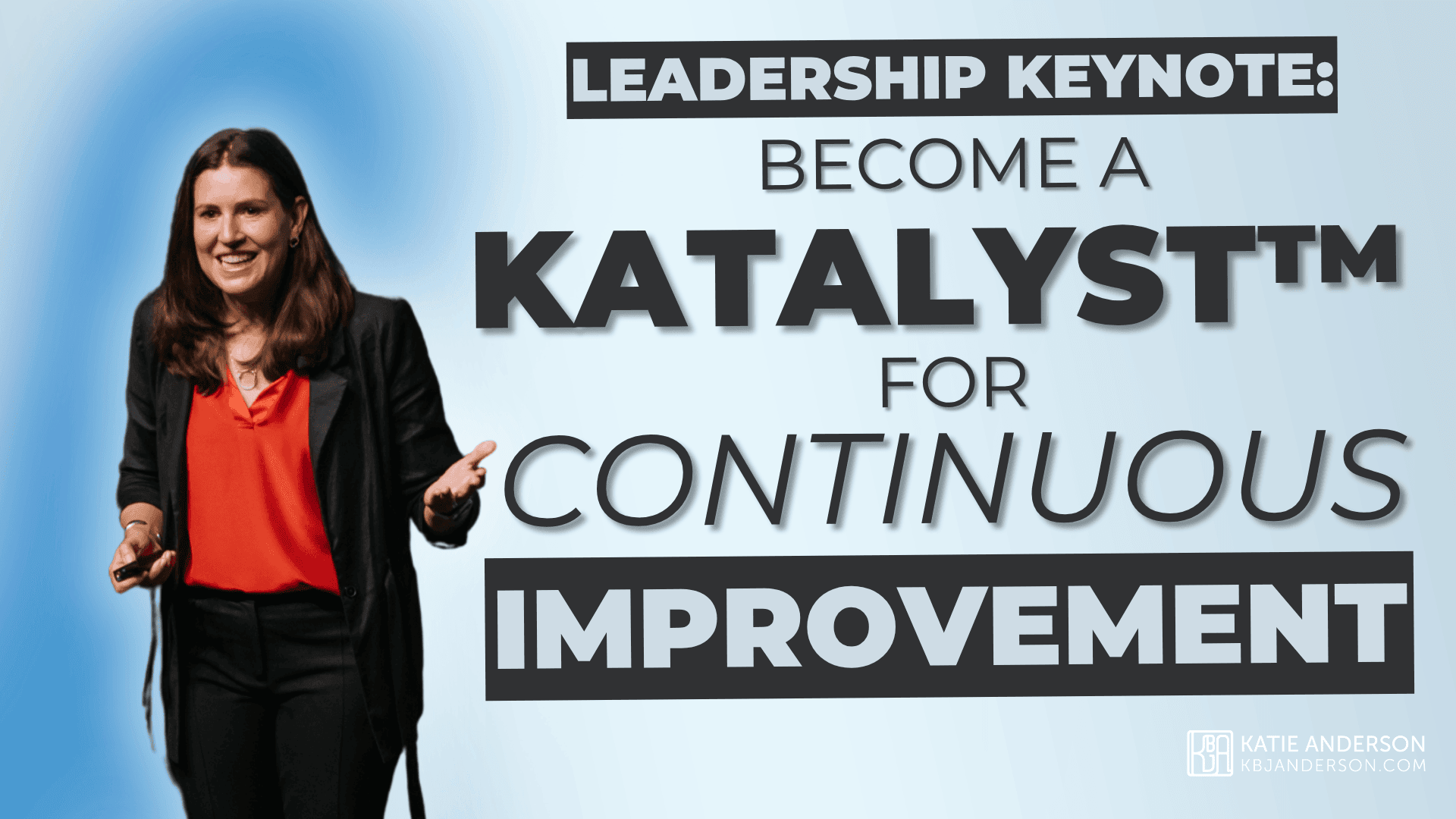Using A3 thinking to coach for personal development
In previous posts, I’ve walked through the value of using A3 thinking to coach for personal development and to support personal improvement, including how you can coach someone through the “left side” of their A3. You can view these articles in the links below:
- Coaching for Improvement: Using A3 Thinking For Personal Development (Part 1 – Overview from the Lean Coaching Summit)
- Coaching for Improvement: Using A3 Thinking For Personal Development (Part 2 – Getting Started on the Left Side)
Click here to receive a free copy of the coach’s guide for using A3 thinking for personal development that was developed for the Lean Coaching Summit.
Working through the “right side” of the A3
Now that your learner has developed their problem or opportunity for improvement towards becoming a better leader or coach of others, and has uncovered some of the root causes of their behavior, they are ready to move to the “right side” of their A3.
Typically the process to develop the “right side” plan is easier to move through than the heavy lifting thinking that goes into “left side” process of identifying current behaviors, focusing on one area on which to work, and uncovering the reasons for limiting habits.
As you guide your learner to the “right side” of the A3, your role as coach now moves to supporting the process of practice, reflection, and ongoing learning.

Experiments and countermeasures
How do we support A3 thinking to coach for personal development? As a coach, help your learner determine a few specific actions that they will take in service towards getting a little bit better every day towards their goals identified on the left side.
The learner should be specific about the new action or habit they want to practice and in what circumstances.
For example, if your learner wants to become better at asking questions rather than giving an opinion, two experiments might be:
- When I hear myself say “I think”, use this as a cue to stop, pause and think of an open-ended question of inquiry to ask instead.
- When I find myself with the urge to jump in with my opinion after asking someone a question, stop and count to 10 first before saying something to give them space to think.
Plan
Help your learner define what, when, and how will they conduct their experiments for improvement. This should include identifying a process and a plan for putting the experiments into action and assessing how the experiments are progressing. This will go a long way to supporting A3 thinking to coach for personal development.
Setting intention and conducting reflection
I have found that helping your learner develop a plan to set a daily intention for their practice that day and reflection on how they performed to plan is a powerful enabler to learning and new habit creation.
This can be as simple as taking 30 seconds going into a stand-up meeting to set the intention that “in this meeting, I will focus on asking questions of inquiry” and at the end of the meeting either asking participants a process question such as “what was the most helpful question that I asked today?”, doing a personal self-assessment or having a coach provide feedback (or all of the above!).
What role does the coach play?
The creation of the plan is also an opportunity for you as the coach to talk with your learner about how you can help support them in their new habits.
How can you observe them and provide feedback? How can you support their learning process?
Reflections and ongoing PDCA
 Your learner should specifically state who they will engage in their process, and how they will reflect and continue to learn. As a coach, you can help your learner deepen their skills of reflection by going through iterative learning cycles.
Your learner should specifically state who they will engage in their process, and how they will reflect and continue to learn. As a coach, you can help your learner deepen their skills of reflection by going through iterative learning cycles.
Remember that like any A3 thinking process, the development of the personal improvement A3 is iterative and requires “going to see” (go to “gemba”) to be able to provide observable feedback to your learner throughout the process of creating new habits.
The development of the personal improvement A3 is just one part of the Plan-Do-Study-Adjust cycle. Plan and Do is important, but the process of Study and Adjust is where new we continue to improve and develop stronger habits.
Lean Transformation Summit
In March 2017, I was at the Lean Transformation Summit in March, to deepen this learning.
I led a one-day pre-Summit workshop titled “Coaching for Development: Structured Coaching Using A3 Thinking”.
What do you think?
Have you tried using this process on yourself or someone that you are responsible for developing? What has your experience been?
I welcome your questions and comments about this process in the comments section below.
Get the guide
If you don’t have it yet you can download my free guide “3 Tips to Break the ‘Telling Habit’”!
Additional references
Interested in more tips and insights about coaching, Lean leadership, and A3 thinking? You can find more information in some previous articles that I’ve written, including:
On this blog:
- The Power of Practicing Personal Problem Solving
- Coaching for Improvement: not just Lean, Toyota, or Silicon Valley methods….Just good leadership
- Leading Daily Improvement: Creating New Habits and Practices to Support Continuous Improvement
- Effective Questions to Support Problem-Solving Thinking
- “Live less out of habit and more out of intent” – Intentions for 2016
- Coaching for Improvement: Using A3 Thinking For Personal Development (Part 1 – Overview from the Lean Coaching Summit)
- Coaching for Improvement: Using A3 Thinking For Personal Development (Part 2 – Getting Started on the Left Side)
In the Lean Post:
- Be More than a Coach, Be a Coach Who Listens
- How To Get Out of the Habit of Telling
- Building Capability, Transforming Organizations
Join my self-paced “Breaking the ‘Telling Habit’” workshop, and unlock your team’s potential by discovering how to ask more effective questions. You can take the class at any time, at your own pace.











